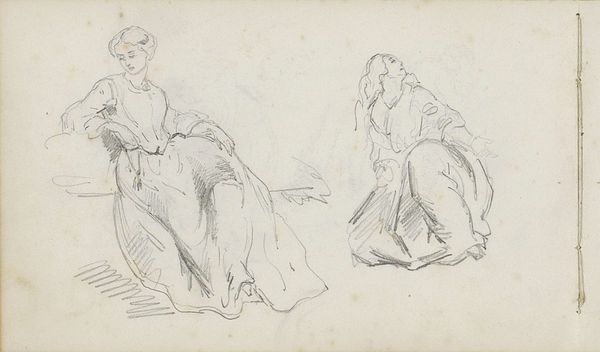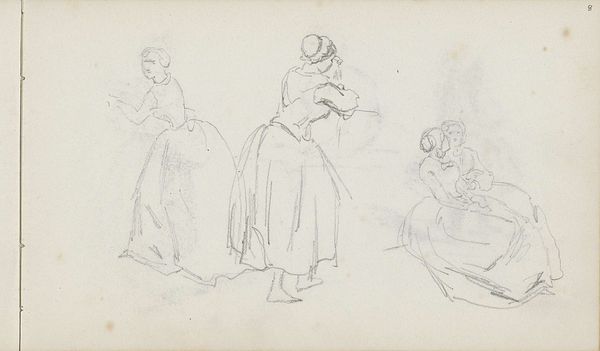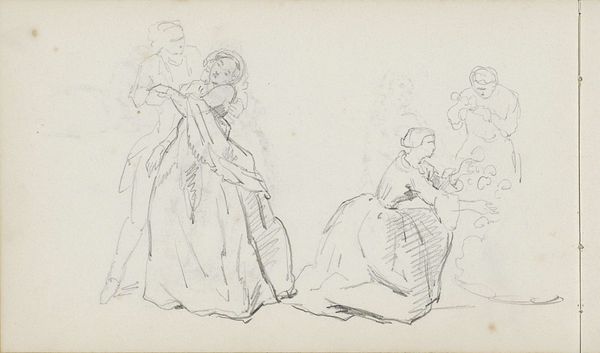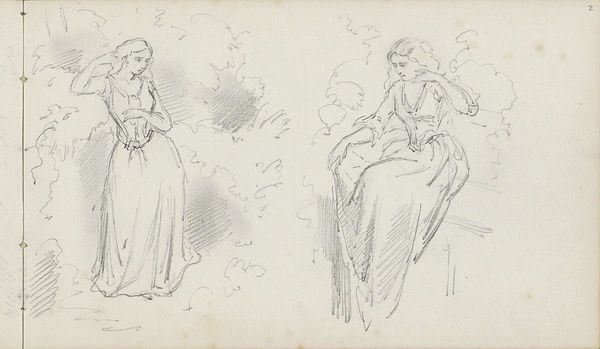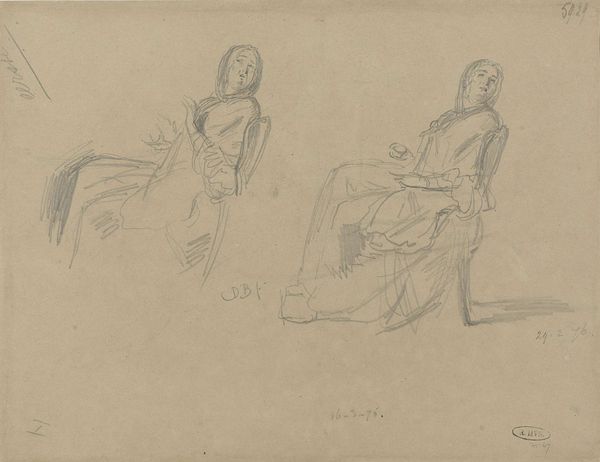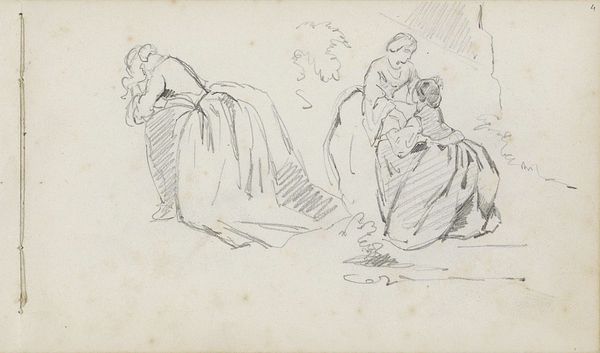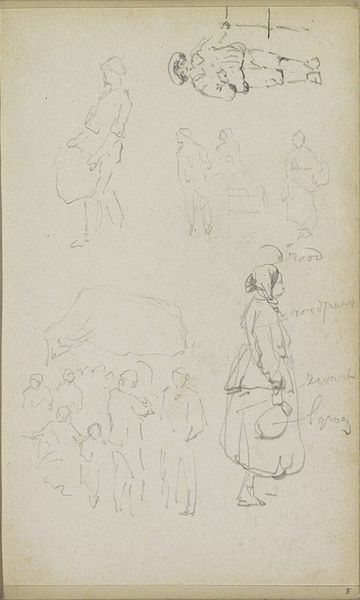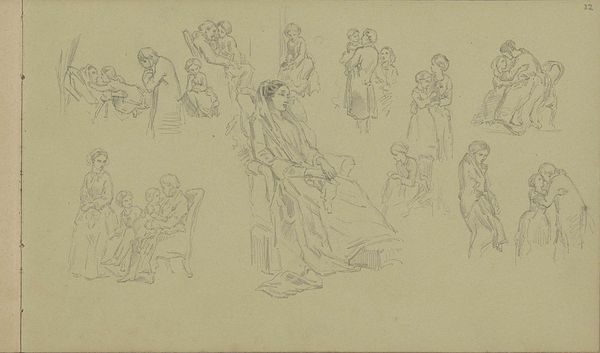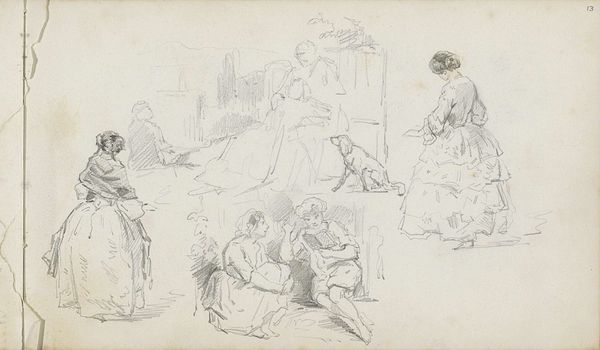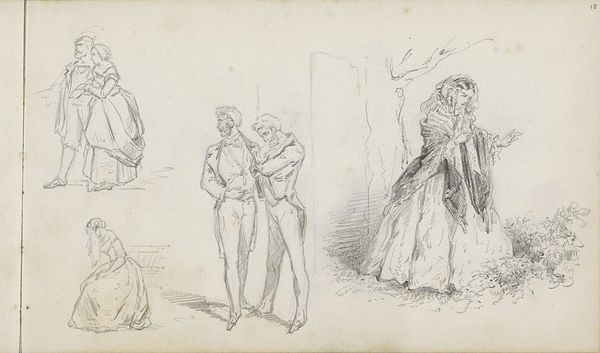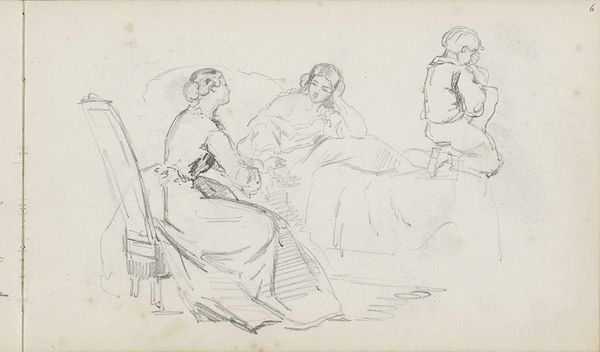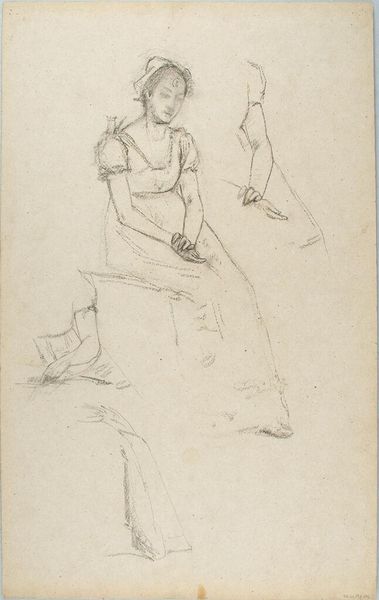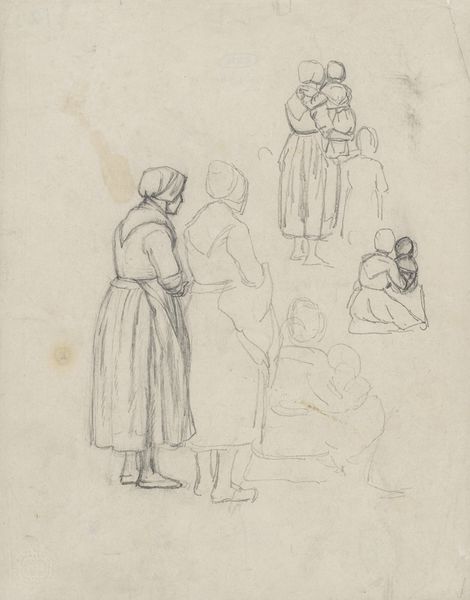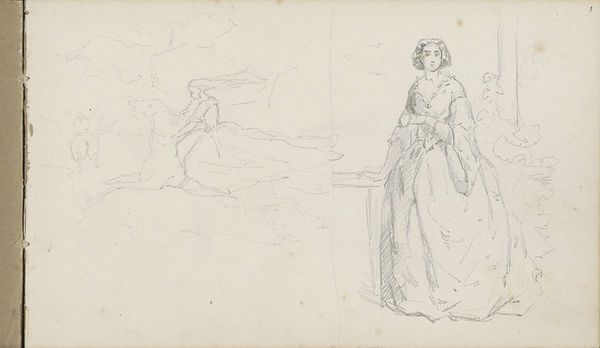
drawing, paper, pencil
#
portrait
#
drawing
#
light pencil work
#
quirky sketch
#
figuration
#
paper
#
personal sketchbook
#
idea generation sketch
#
sketchwork
#
romanticism
#
pencil
#
sketchbook drawing
#
genre-painting
#
storyboard and sketchbook work
#
fashion sketch
#
fantasy sketch
#
initial sketch
Copyright: Rijks Museum: Open Domain
Curator: Charles Rochussen created this pencil drawing, “Zittende, staande en liggende vrouw,” sometime between 1840 and 1860. It’s currently held here at the Rijksmuseum. Editor: I'm immediately struck by the unfinished quality. They're more like ghosts than fully realized figures, particularly the one in the background. What was Rochussen aiming for here? Curator: Precisely! We need to think about Rochussen's position within 19th-century social dynamics. He was a sharp observer, critiquing bourgeois society. I see these figures embodying the roles women were forced into at the time – submission, domesticity, maybe even a hidden rebellion in that standing figure's posture. Editor: Hmm, but doesn’t the materiality also hint at something? It’s pencil on paper; inexpensive, readily available. It suggests the sketch wasn’t intended as a finished piece, but perhaps part of a larger preparatory process for paintings, or even illustrations intended for mass consumption. Were these women models, or figments of Rochussen's imagination in exploring their labor roles within society? Curator: Both, perhaps? The looseness can be interpreted as an act of resistance, against the rigid expectations of female representation prevalent in art at the time. Rochussen wasn't interested in idealized beauty, he's showing us the raw reality of women contained within their gender, in those gestures of fatigue and resignation. Editor: I see it more as reflecting the everyday lives that many working-class women, but from the sketches alone we can only guess. Were those sketches perhaps mass produced as popular depictions for those who were socially distant from them, as items available for sale and exchange? We really should consider this artwork’s distribution method! Curator: That's where the interesting tension lies, doesn't it? Rochussen was both observing and participating in these social structures. By showing them in these poses of submission but without proper glamour, it challenges societal ideals of that era. Editor: It leaves me thinking about labor: Rochussen's, the depicted women’s and potentially that of the printmakers and distributors if these sketches informed reproductive prints and how this system affected those working-class figures' material existences and representations at the time. Curator: Ultimately, "Zittende, staande en liggende vrouw" offers a poignant, complex representation of women in the 19th century. Editor: Yes, it makes you wonder how seemingly simple pencil strokes hold all these stories.
Comments
No comments
Be the first to comment and join the conversation on the ultimate creative platform.
